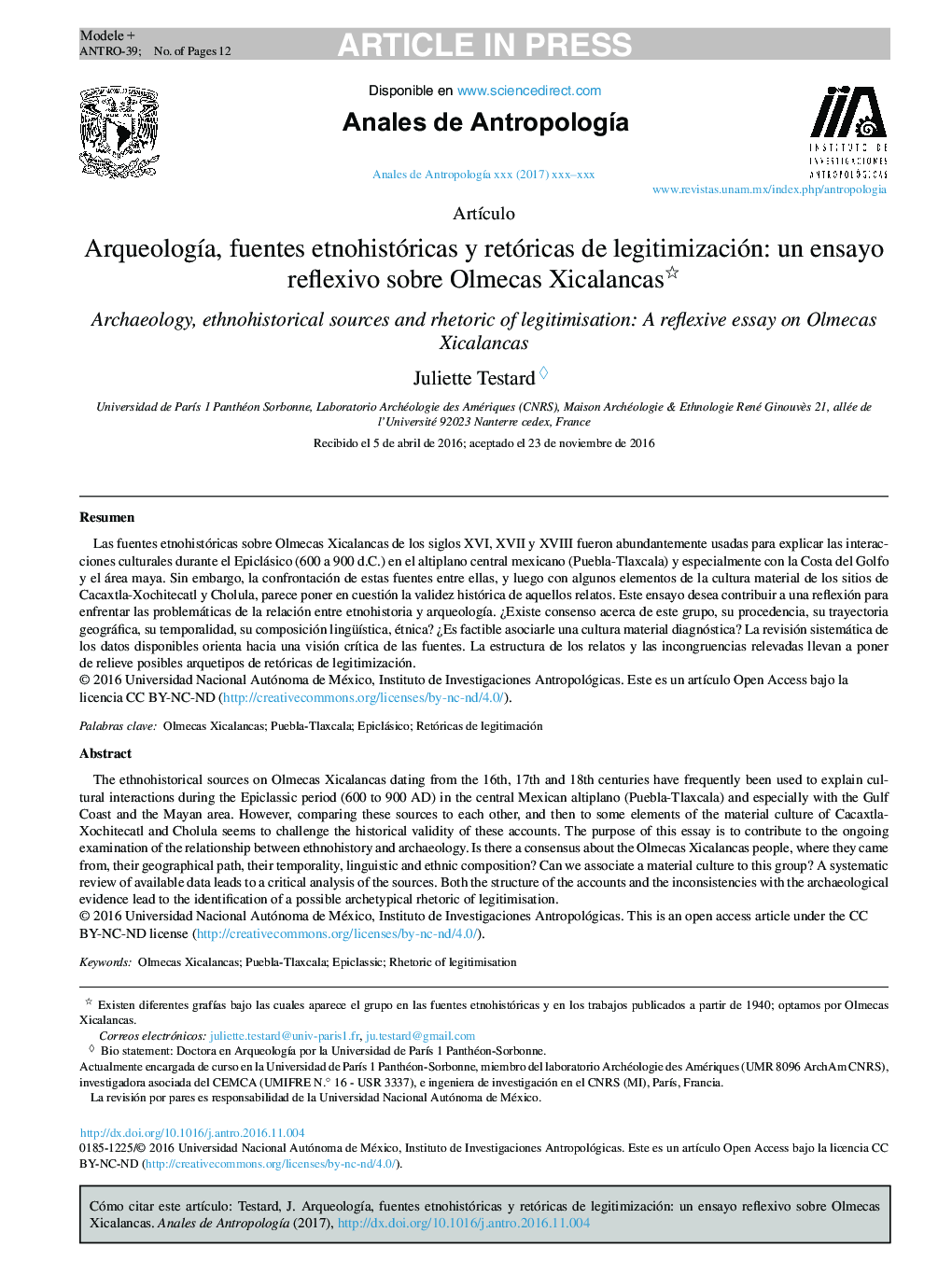| Article ID | Journal | Published Year | Pages | File Type |
|---|---|---|---|---|
| 7550574 | Anales de Antropología | 2017 | 12 Pages |
Abstract
The ethnohistorical sources on Olmecas Xicalancas dating from the 16th, 17th and 18th centuries have frequently been used to explain cultural interactions during the Epiclassic period (600 to 900 AD) in the central Mexican altiplano (Puebla-Tlaxcala) and especially with the Gulf Coast and the Mayan area. However, comparing these sources to each other, and then to some elements of the material culture of Cacaxtla-Xochitecatl and Cholula seems to challenge the historical validity of these accounts. The purpose of this essay is to contribute to the ongoing examination of the relationship between ethnohistory and archaeology. Is there a consensus about the Olmecas Xicalancas people, where they came from, their geographical path, their temporality, linguistic and ethnic composition? Can we associate a material culture to this group? A systematic review of available data leads to a critical analysis of the sources. Both the structure of the accounts and the inconsistencies with the archaeological evidence lead to the identification of a possible archetypical rhetoric of legitimisation.
Related Topics
Social Sciences and Humanities
Arts and Humanities
Arts and Humanities (General)
Authors
Juliette Testard,
